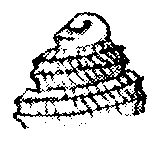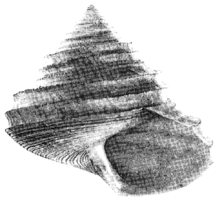
Satellite
In the context of spaceflight, a satellite is an artificial object which has been intentionally placed into orbit. Such objects are sometimes called artificial satellites to distinguish them from natural satellites such as Earth's Moon.
The world's first artificial satellite, the Sputnik 1, was launched by the Soviet Union in 1957. Since then, thousands of satellites have been launched into orbit around the Earth. Some satellites, notably space stations, have been launched in parts and assembled in orbit. Artificial satellites originate from more than 40 countries and have used the satellite launching capabilities of ten nations. About a thousand satellites are currently operational, whereas thousands of unused satellites and satellite fragments orbit the Earth as space debris. A few space probes have been placed into orbit around other bodies and become artificial satellites to the Moon, Mercury, Venus, Mars, Jupiter, Saturn, Vesta, Eros, Ceres, and the Sun.
Satellites are used for a large number of purposes. Common types include military and civilian Earth observation satellites, communications satellites, navigation satellites, weather satellites, and research satellites. Space stations and human spacecraft in orbit are also satellites. Satellite orbits vary greatly, depending on the purpose of the satellite, and are classified in a number of ways. Well-known (overlapping) classes include low Earth orbit, polar orbit, and geostationary orbit.
Satellite (disambiguation)
Satellite or satellites may refer to:
- Satellite state, a dependent country
- Commuter town, a town within commuter range of a larger city
- Satellite campus, which is physically detached from the main campus
Apex
Apex may refer to:
Astronomy
Biology
Places
Organizations

Apex (headdress)
The apex was a cap worn by the flamines and Salii at Rome. The essential part of the apex, to which alone the name properly belonged, was a pointed piece of olive-wood, the base of which was surrounded with a lock of wool. This was worn on the top of the head, and was held there either by fillets only, or, as was more commonly the case, was also fastened by means of two strings or bands, which were called apicula (Festus, s.v.), or offendices (Festus, s.v.), though the latter word is also interpreted to mean a kind of button, by which the strings were fastened under the chin (cf. Serv. ad Virg. Aen. ii.683, viii.664, x.270).
The flamines were forbidden by law to go into public, or even into the open air without the apex (Gellius x.15), and hence we find the expression of alicui apicem dialem imponere used as equivalent to the appointment of a Flamen Dialis (Livy vi.41). Sulpicius was deprived of the priesthood, only because the apex fell from his head whilst he was sacrificing (Valerius Maximus i.1 §5).

Apex (mollusc)
In anatomy, an apex (adjectival form: apical) is part of the shell of a mollusk. The apex is the pointed tip (the oldest part) of the shell of a gastropod, scaphopod, or cephalopod.
Gastropods
The word "apex" is most often used to mean the tip of the spire of the shell of a gastropod. The apex is the first-formed, and therefore the oldest, part of the shell.
To be more precise, the apex would usually be where the tip of the embryonic shell or protoconch is situated, if that is still present in the adult shell (often it is lost or eroded away).
Coiled gastropod shells
The phrase apical whorls, or protoconch, means the whorls that constitute the embryonic shell at the apex of the shell, especially when this is clearly distinguishable from the later whorls of the shell, otherwise known as the teleoconch.
Comparison of the apical part and the whole shell of Otukaia kiheiziebisu:


Limpet-like gastropod shells
Where this feature is present, the space under the apex of a patellate or patelliform (limpet-like) gastropod shell is called the apical cavity.
Podcasts:

